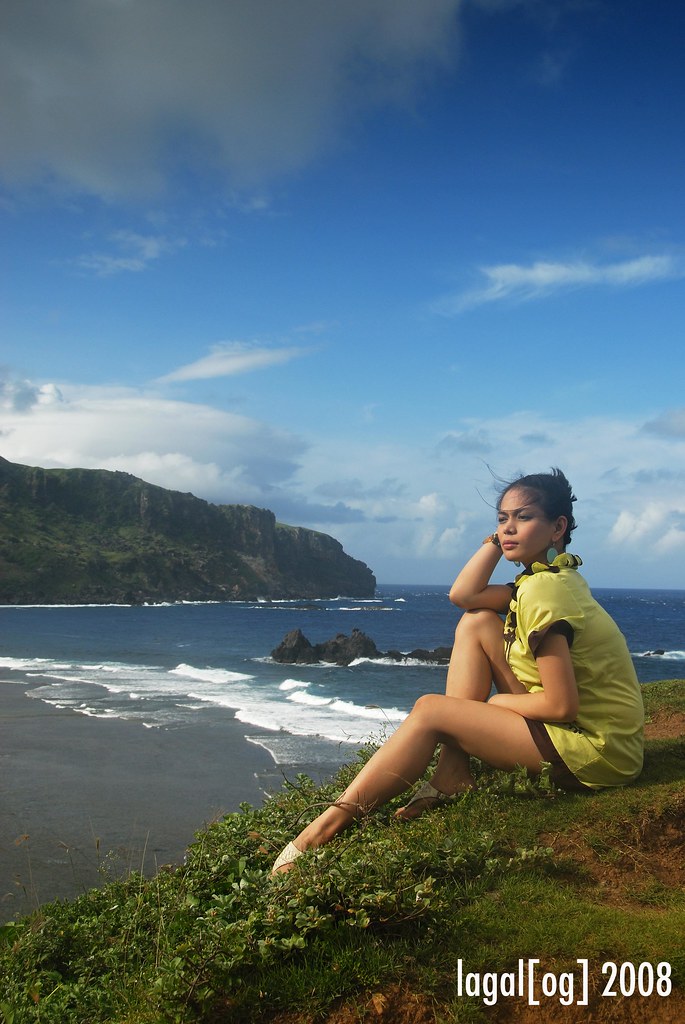 |
| Jas Castillejos-Mendoza on the hills of Imnajbu |
For this post, I am reprinting en toto the article I contributed to Philippine Mabuhay News, East Coast Edition which came out this third week of March.
Mabuhay! It’s apt that I open my first
contribution to Philippine Mabuhay News with its namesake, the beloved Pinoy traditional greeting. Before I plunge into the nitty-gritty, allow me to introduce myself. I’m Oggie Ramos, more popularly known online as Lagalog. I’m a multimedia conceptualist/writer based in Makati, Metro Manila when I’m not out of town shooting landscapes or writing travel stories. My fascination with exploring different places in the Philippines got kickstarted by a comment an overseas-based friend
made – that there’s not much beautiful places to see in the country. To make a long story short, my friend who’s now one of my most loyal readers, was only too happy to be proven wrong.
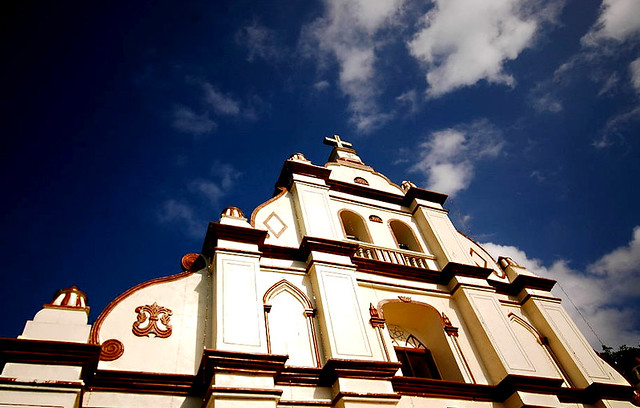 |
| St. Dominic Guzman Church in Basco |
Oh I can keep blabbering how beautiful the Philippines is but I’d rather show you in both words and images. Let’s start our journey together flying southeast, making a stopover in Manila where we catch a flight to Basco. We fly over the green expanse of the Mountain Province, Ilocos and mainland Cagayan and go as far north as we can without requiring a passport. Some people go to Batanes for the postcard-pretty views and that’s got a lot of merit. I venture there for that and to escape the city.
The latitude gives the island group of Batanes a veritable winter season, a period when the cold winds from China blows over the islands. Sitting where the South China Sea meets the Philippine Sea has produced a dramatic landscape that reminds not a few guests of Ireland – undulating terrain bordered by dramatic cliffs carved by the relentless wind and waves into ruggedly stunning rockscapes. There’s something about being confronted by such natural wonder that humbles and awes you at the same time.
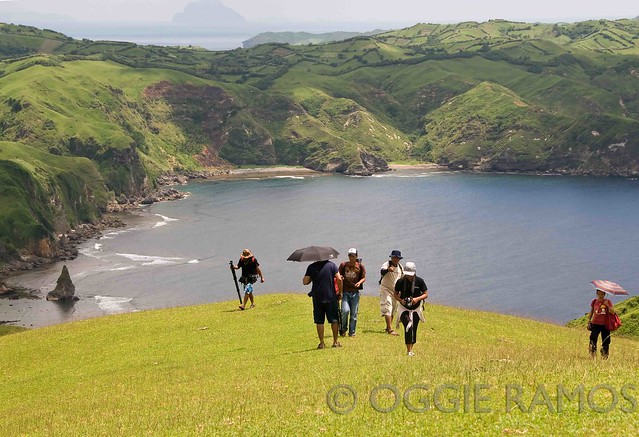 |
| Hiking the Marlboro Hills |
Stopping over at Batan. The main island, Batan, is where bulk of the 15,000-strong population resides and where most tourists stay to explore. I once explored Batan riding a rented tricycle, going through the coastal road and up the interior passages in three days. One of the standard tourist attractions is the so-called Marlboro Hills (Racuh A Payaman) in the town of Mahatao which never fails to amaze me even if I’ve seen it several times. It’s named as such because
it looks like a cowboy will come galloping across the verdant, rolling hills any moment. If you’re a fan of peace and quiet, I suggest you come down and around to the quaint fishing village of Diura where the rocky shores beg for contemplative walks.
Within hiking distance from the Basco town proper, you can explore the hills of Viang, resplendently sublime especially during the sunset hours, a canvas of rolling terrain that resembles the skin of a Sharpei that keeps unfurling until the
land tapers to the sea. It’s intoxicatingly beautiful, enough to inspire anyone to wax poetic.
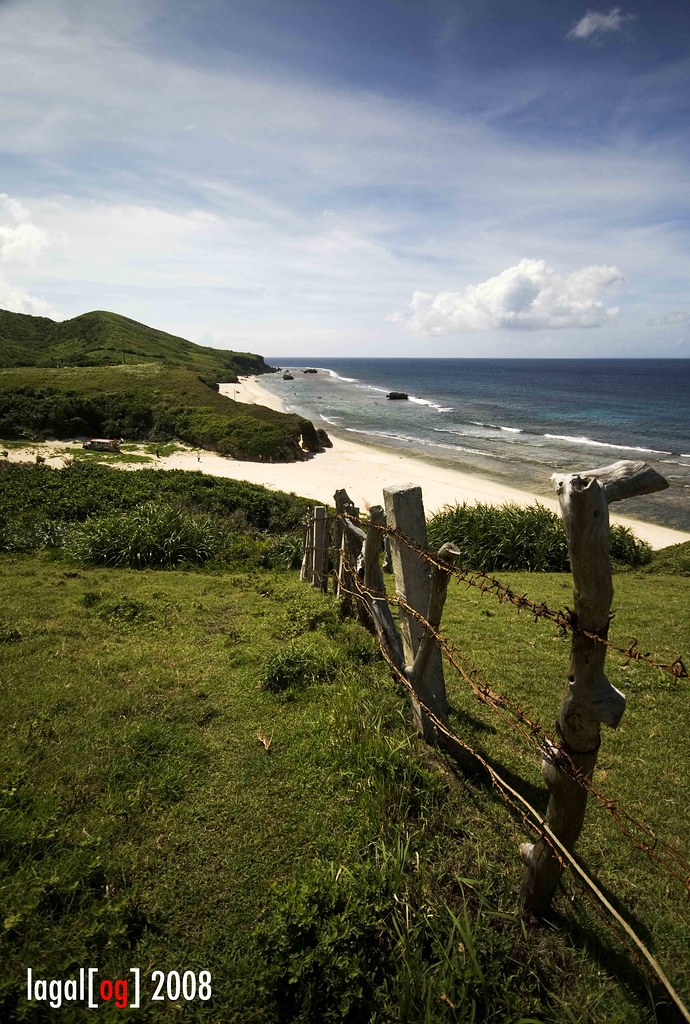 |
| The hill overlooking Nakabuang beach |
Crossing over to Sabtang. Just 45 minutes by falowa (the Ivatan rounded-bottom boat with no outrigger) to the west lies the island of Sabtang separated by a temperamental channel of water. While Batan, particularly Basco, has lately been wearing the signs of progress (read: fancier accommodations and eating places), Sabtang remains laidback and quaint.
Coming to the town of Savidug, you can still find a community of stone houses and if you’re so inclined, stay in one for the night. Heading further west, you get rewarded by the sight of the elegant Nakabuang beach punctuated by a
magnificent natural arch.
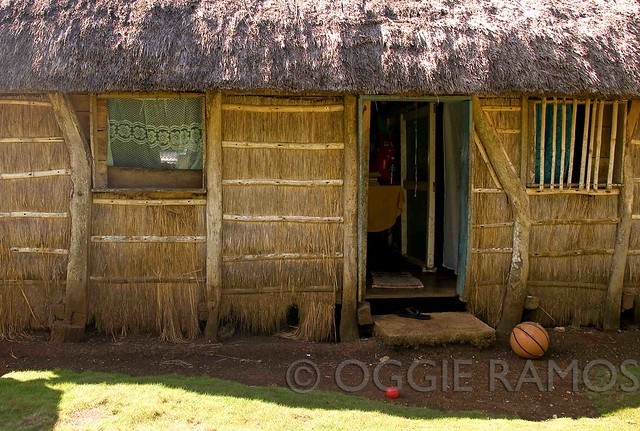 |
| Vernacular houses preceded the iconic stone house |
Heading farther north to Itbayat. If the weather and the seas are more forgiving, I recommend a visit to the island of Itbayat to the northwest, about four hours by falowa. The island is one of the world’s largest uplifted coral and an open secret among serious deep sea game fishermen willing to trade an often nauseous ride to the thrill of catching a prized dorado (mahi-mahi) or marlin. Coming by boat, disembarking is already an adventure where you dance with the sea and leap to the make-shift port timed to the cresting of a wave. I heard there’s a plane that ply the Basco – Itbayat route once a week but a recent landing mishap makes me think twice about the airline, a newcomer to the islands.
 |
| Pastoral view of Itbayat |
If Sabtang is more laidback than Batan, then Itbayat is pastoral in comparison. There are no fancy accommodations, only real, honest-to-goodness homestays (the better to immerse yourself in the local experience). There’s electricity but only until 12 midnight. After that, you slumber under a mosquitero (mosquito net) enveloped by deep silence. This is clearly no place for tourists craving for parties or modern fixes but the trade-offs are an utter lack of stress and even more dramatic vista of windswept rolling, verdant terrain, temperamental deep blue sea, and painting-like blue skies that is just too beautiful for words. Further inland, in the town of Raele, you can still find Ivatan vernacular houses made of grass which preceded the more familiar, Spanish-influenced stone houses.
I used to flinch when I hear people say being in Batanes is like being transported to another country. Well, I still do but that I guess in a way, is a compliment. There’s so much more beauty hidden in the Philippines and it’s up to the intrepid traveler to discover and it’s up to the locals to preserve.
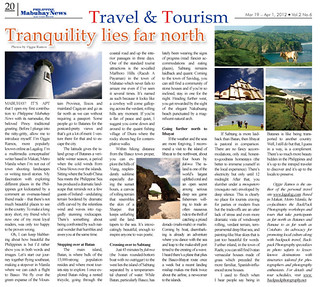
Oggie Ramos is the author of the personal travel site www.lagalog.com. Based in Makati, Metro Manila, he co-facilitates the BackPack Photography workshops and tours that take participants as far north as Batanes and Banaue to as far south as Cotabato. An advocacy for promoting local culture along with backpack travel, Backpack Photography specializes in photo safaris to lesser-known destinations with itineraries tailored for photographers and photography enthusiasts. For details and tour schedules, visit www.backpackphotography.net
